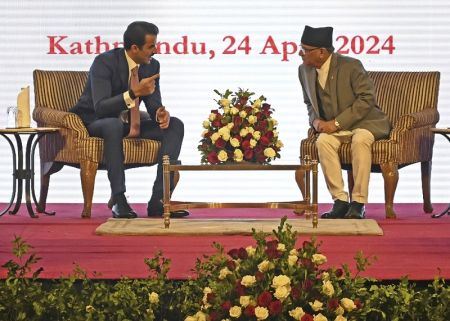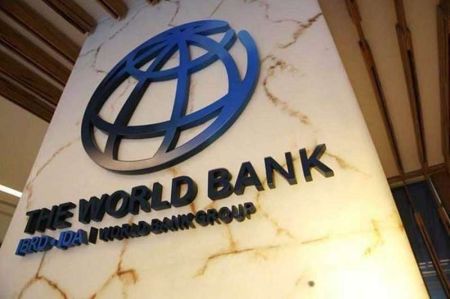.JPG)
--By Rashika Pokharel
Machhapuchhre Bank Limited, a year ago had declared to a target place itself among the top most preferred Nepali banks within five years. The progress, so far, is promising towards this end, says the bank. It is expanding according to its plan. And one main strategy is to upgrade human resource quality. This year alone the bank has provided 500 training programmes to its employees and with all these positive growth, the bank aspires to become one of the top five Nepali banks in five years. “Our brand image has transformed and our marketing is very systematic,” Tulasi Ram Gautam, chief executive officer of the Bank said expressing optimism for the way ahead.
.jpg) |
| Tulasi Ram Gautam CEO Machhapuchhre Bank Limited |
The Choices Ahead
To grow, Machhapuchhre Bank is still in the need of capital and for this it is considering three options. First one is to issue right share, second is to issue debentures and third one is merger.
"We are open for any of these three options. Though the AGM has provided permission for merger, and though we have plenty of prospective financial institutions willing to merge with us considering our previous successful merger record, we are still undecided on a merger partner,” Gautam said. However, he made it clear that going for merger is the bank’s second priority and added that presently it has been focused on the issuance of debenture.
The Post-Merger Scenario
Following the previous merger, the bank's deposit increased by Rs 13 billion, the loan by Rs12 billion and it earned a net profit of Rs 10 million. During the past nine months of the current fiscal year, the net profit reached around Rs 250 million. "Our bank is growing from every perspective. We are serving around 0.3 million clients. Four of our branches that over-lapped during the merger, but now we have adjusted this problem and we are providing our services through 56 branches and 66 ATMs," says Gautam.
Prior to the merger, its business was running low due to limited capital. Additionally, the Nepal Rastra Bank (NRB) guidelines were hindering its access to loan. Even its newly opened up branches were performing sluggishly in those days. This gave out a general impression that the bank would not make good business. However, behind all these, insufficient capital was the only reason, says the bank.
The merger provided the much need impetus to the bank’s capital base and pushed it into good business. “Soon after the merger, our promoters as well as the whole management team changed. Gradually, the banking activities gained momentum and even the market took this fact positively,” said Gautam while sharing that though synching both institutions’ software data and employees was difficult in the beginning, they did resolve the bottlenecks gradually.
.jpg) Financial Highlights
Financial Highlights There are many positive changes in the third quarterly report. “Looking from the business perspective we can proudly say that our business in fostering. When the merger took place, one and half years back, our deposit was around Rs 21 billion but coming now it has increased to 34 billion," Gautam said while stating that they have a very fantastic business growth.
He says that with 15 percent capital adequacy, prior to the merger, the bank's resources were underutilized. However, in the post-merger period, the bank has increased marketing efforts, changed its branding strategies, gained more market value and trust of other banks.
The Bank’s mid-April 2014 quarterly report claims that its gross non-performing loan has decreased to 2.2 per cent. "Our non performing loans are decreasing and we are planning to push it below 2 per cent by the end of this fiscal year and below 1 per cent by the end of the next fiscal year. We have different options for reducing it, such as recovery of loan, restructuring or making necessary adjustment to loan terms or increasing the tenure of loan. If these efforts fail in recovering our investment, we will take legal actions,” Gautam says.
Presently the Bank is not ready to disclose any plans for dividend distribution. It believes that it has a long procedure and has to wait for NRB's approval. However, the bank has made a profit of around Rs 320 million so far this fiscal year and aims to reach Rs 500 million, at its end.
Commenting on the NRB directive to reduce the interest rate spread, Gautam mentions that the Nepal Bankers’ Association (NBA) has taken serious exception to this directive and has forwarded two propositions. It has pitched on letting the market to determine the interest rate spread on its own and if it’s not possible, due to any reasons, then the Cash Reserve Ratio (CRR) and the liquid assets must be adjusted accordingly. “We believe that NRB will look into the fact as such a directive will definitely make it difficult for some banks to fulfil. In our case, since our interest rate is 5.5 percent, it will not be difficult, even though it will definitely hamper the profit,” Gautam said.
Machhapuchre Bank is the first commercial bank to start business from the western region of the country, states Gautam. It is also the first bank to introduce centralised banking software, Globus Banking System of Temenos NV, Switzerland. On June 29, 2012 it merged into it the Standard Finance and now has a paid up capital of Rs 2.5 billion.





















